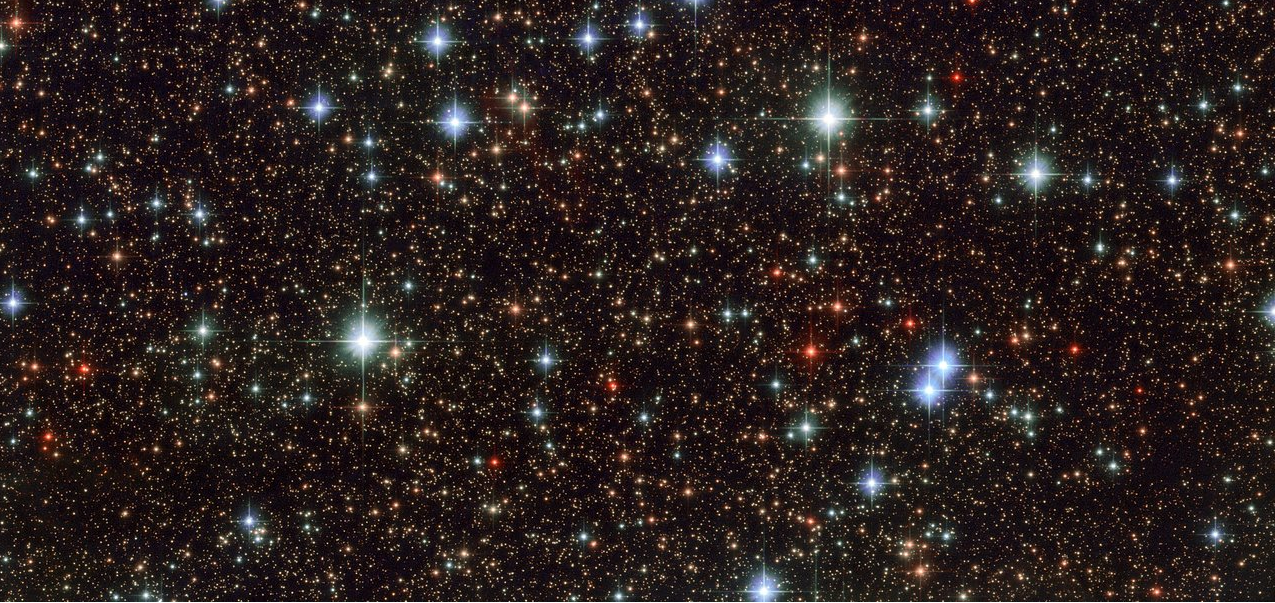High School | Daily Do
How Do We Know What Stars Are Made Of?

Astronomy Crosscutting Concepts Disciplinary Core Ideas Earth & Space Science Is Lesson Plan NGSS Phenomena Physical Science Science and Engineering Practices Three-Dimensional Learning High School Grades 9-12
Sensemaking Checklist




Welcome to NSTA's Daily Do
Teachers and families across the country are facing a new reality of providing opportunities for students to do science through distance and home learning. The Daily Do is one of the ways NSTA is supporting teachers and families with this endeavor. Each weekday, NSTA will share a sensemaking task teachers and families can use to engage their students in authentic, relevant science learning. We encourage families to make time for family science learning (science is a social process!) and are dedicated to helping students and their families find balance between learning science and the day-to-day responsibilities they have to stay healthy and safe.
Interested in learning about other ways NSTA is supporting teachers and families? Visit the NSTA homepage.
What Is Sensemaking?
Sensemaking is actively trying to figure out how the world works (science) or how to design solutions to problems (engineering). Students do science and engineering through the science and engineering practices. Engaging in these practices necessitates that students be part of a learning community to be able to share ideas, evaluate competing ideas, give and receive critique, and reach consensus. Whether this community of learners is made up of classmates or family members, students and adults build and refine science and engineering knowledge together.
Introduction
Today's task, How do we know what stars are made of?, uses a formative assessment probe to surface students' thinking about how astronomers figure out what stars are made of. Students then engage with a text to gather ideas about the composition of stars: how stars create elements and how we know which elements make up the different types of stars. Students then have an opportunity to create a spectroscope and analyze light from common sources to better make sense of how light spectra and brightness are used to identify the compositional elements of stars.
Tips for Talking With Students About the Probes
Page Keeley, lead author of the Uncovering Student Ideas in Science series, offers these tips for talking with your students about probes.
- Activate students' preconceptions.
- Engage them in experiences during which they acquire evidence and new information.
- Have them use what they discovered to revisit and revise initial thinking.
Throughout this process, it’s important that teachers and families focus on letting students get their ideas out. Try not to comment on whether an idea is accurate or “good.” Don’t correct students when they share a misconception. Instead, use comments like “tell me more about that” or “what else do you think about ___?” These open-ended prompts can invite more detailed discussion.
Check out the Why Is My Shadow Always Changing? Daily Do written by Page Keeley for additional guidance on how to use probes in distance and home learning to support student sensemaking.

What Are Stars Made Of?
Ask students to read the What Are Stars Made Of? probe, then choose the student they think best explains how astronomers figure out what stars are made of. Encourage students to also explain why they think their chosen student has the best answer.
You might choose to have students turn to a partner or small group and share their thinking. If students want to change their answer after discussing the probe with a partner or small group, ask them to record the evidence shared by their classmate that changed their thinking.
Through a show of hands or other polling method, create an opportunity for students to see that the class is not in agreement about how astronomers figure out what stars are made of. For each student answer (Igor, Bonnie, Olympia, etc.) represented in your class polling, ask for one or two students who chose that student to share their thinking or the thinking of another student they agreed with. Accept all ideas.

Note: You may have many students that choose the correct answer (Sophia) without understanding how examining light allows astronomers to determine the composition of stars. This is acceptable.
Say to students, "I have an article called 'Where Do Chemical Elements Come From?' that might help us figure out which student best explains how astronomers figure out what stars are made of."
Give students time to read the article, then revisit the probe. Allow students to change their response (choose a different student) and/or include additional ideas that support their choice for best explanation of how astronomers figure out what stars are made of.
Ask students to set their probes aside and navigate to analyzing light with a spectroscope.
Make a Spectroscope to Analyze Light
Below are some examples of spectroscopes that students can easily and inexpensively make at home or in the classroom. Links are provided to materials that students or teachers might not have readily available.
Idea Bank: A 50-Cent Analytical Spectroscope from The Science Teacher (NSTA high school journal)
- Single Axis Diffraction Grating (each spectroscope uses 1.5 cm x 2.5 cm piece)
- household items
CD Spectroscope: Make a Truth Teller for Light from the Exploratorium's Science Snacks
- 3-inch diameter mailing tube, individual or 12-pack (1 tube makes 2 spectroscopes)
- blank or old CD
- household items
Rainbow Science for Kids: Homemade Spectroscope from Buggy and Buddy
- blank or old CD
- household items
Each of these resources include suggestions for analyzing common light sources.
This web page provides sharp images of emission spectrum for each element. Students might recognize the emission spectrum for mercury when analyzing fluorescent lights and the sodium emission spectrum for street lights.
Revisit the Probe
Now that students have analyzed different light sources using a spectroscope, ask them to revisit the What Are Stars Made Of? probe and revise/add to their responses.
NSTA Collection of Resources for Today's Daily Do
NSTA has created a How do we know what stars are made of? collection of resources to support teachers and families using this task. If you're an NSTA member, you can add this collection to your library by clicking Add to My Library, located near the top of the page (at right in the blue box).
Check Out Previous Daily Dos From NSTA
The NSTA Daily Do is an open educational resource (OER) and can be used by educators and families providing students distance and home science learning. Access the entire collection of NSTA Daily Dos.
Acknowledgment
The probe used in today's task, What Are Stars Made Of?, is published in Uncovering Student Ideas in Astronomy: 45 New Formative Assessment Probes by Page Keeley and Cary Sneider.


